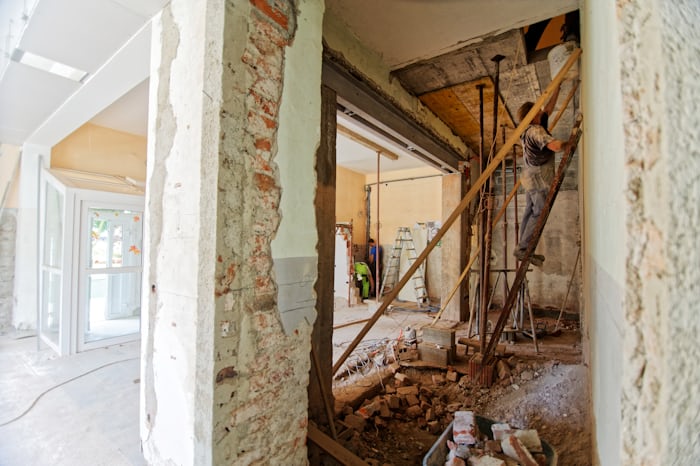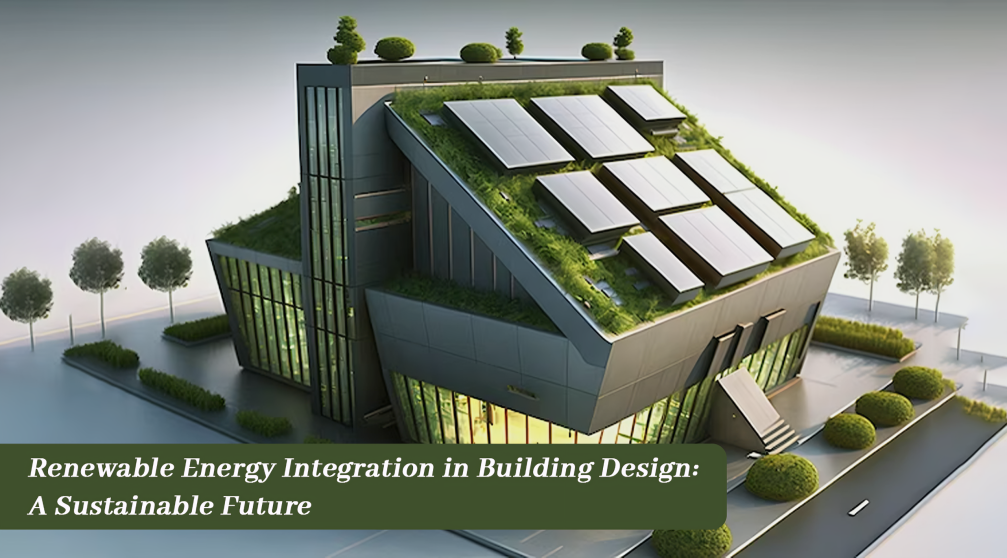Real Estate
Increasing the Value of Your House: Techniques for Dealing with Realtors

Key Takeaways:
- Enhancing curb appeal is a cost-effective strategy that can increase home value.
- Correct pricing in line with market evaluation is essential for attracting the right buyers.
- Effective staging and preparation for showings can significantly impact buyer perception.
- Strategic marketing and the use of technology are critical in today’s real estate landscape.
- Choosing the right realtor with local expertise is crucial for successful negotiation and legal processes.
Table of Contents:
- The Importance of Curb Appeal
- Understanding Home Valuation
- Preparing Your Home for Showings
- Marketing Your Home Effectively
- The Art of Negotiation
- Legal Considerations in Real Estate Transactions
- Utilizing Technology in Real Estate
- Navigating the Current Real Estate Market
- Choosing the Right Realtor
- Your Path to a Successful Home Sale
The real estate market is an intricate arena where the proper guidance can unlock the actual value of your property. Selling a home involves strategic pricing, impactful presentation, and understanding the latest market trends and legalities. Partnering with astute Minnetonka Realtors can be your key to smoothly navigating this complex process. We will explore comprehensive strategies for homeowners aiming to maximize their home’s value, with insights into realtors’ invaluable role throughout a property sale.
The Importance of Curb Appeal
Remember the power of a great first impression when planning to sell your home. The exterior of your home is your initial point of contact with potential buyers, and its appearance can set expectations for the rest of the property tour. Simple yet intelligent enhancements, such as a manicured lawn, fresh flowers, or a newly painted front door, can significantly contribute to a property’s attractiveness. It’s essential to pay attention to details such as clean windows, a well-maintained pathway, and inviting lighting, as they collectively add to the overall perception of your home. By focusing on cost-effective improvements such as these, you can captivate the attention of prospective buyers and expedite the selling process.
Understanding Home Valuation
Accurate home valuation is at the core of setting an appropriate asking price. It’s a precise balance that often requires understanding a myriad of variables. The unique qualities of the property, upcoming neighborhood developments, and recent sales of nearby residences comparable to the property will all influence the right price. TheMLSonline has the tools and knowledge to conduct an in-depth analysis, ensuring your home is valued and priced out of the market. This analytical approach draws genuine interest from potential buyers and prevents prolonged market listings that can ultimately lead to a lower sale price.
Preparing Your Home for Showings
The interior of your home should be as inviting as its exterior. Preparations for showings often include decluttering personal items, which helps buyers envision their own life in the space. Additionally, addressing minor repairs can prevent buyers from becoming concerned about potential maintenance issues. Equally crucial is the staging process, where furniture and decor are explicitly arranged to showcase the home’s best features and functionalities. A well-staged house highlights potential and space, which can speed up the selling process and increase the asking price. Presenting a home that appears well-maintained and ready to move in can make all the difference to someone on the house hunt.
Marketing Your Home Effectively
In our digital age, a home’s online presence is as crucial as its street presence. Effective marketing strategies include high-quality photography, engaging property descriptions, and leveraging online platforms like social media to reach a wider audience. Professional photography and virtual tours can provide an immersive experience, allowing buyers to tour your home from anywhere. This accessibility not only broadens your potential buyer pool but also accommodates the growing trend of online home shopping, ensuring that your property garners significant attention.
The Art of Negotiation
Negotiation is an art form in real estate, and it requires a deft understanding of market dynamics and human psychology. Influential realtors come equipped with this expertise, serving as adept mediators who can navigate the complexities of offers and counteroffers. They understand the importance of strategy, timing, and communication in securing a favorable deal for both parties. Through their guidance, negotiations can be approached confidently and poised, often leading to satisfactory outcomes for homeowners.
Legal Considerations in Real Estate Transactions
The sale of a home involves a significant amount of legal documentation that can be overwhelming for those unfamiliar with real estate transactions. The legal intricacies can be consumed, from contracts to disclosure statements and potential zoning concerns. Guidance from a knowledgeable realtor is more than a convenience—it’s necessary to prevent issues down the line while ensuring all essential legal protocols are diligently followed for a smooth transaction.
Utilizing Technology in Real Estate
Embracing technology has become non-negotiable in the modern real estate market. The capability to list properties online, create high-definition 360-degree tours, and utilize data analytics for targeted marketing are all tools that can significantly impact the sale of a home. Advancements in real estate tech are rapidly transforming how properties are viewed and advertised and even how transactions are processed. Adopting these technologies ensures that your real estate dealings are on par with current standards and expectations.
Navigating the Current Real Estate Market
The key to traversing the fluctuating real estate market lies in understanding the broader economic landscape and regional nuances. Seasonality, interest rates, and consumer confidence are pivotal in determining buyer activity. Realtors not only bring to the table their extensive knowledge of market trends but also access to detailed forecasts, like the 2023 National Housing Forecast, to help you time the sale of your property effectively. With informed strategic planning, they can maneuver through market nuances to achieve optimal sale conditions.
Choosing the Right Realtor
The selection of a realtor should be taken seriously, as they will be your advisor, negotiator, and advocate throughout the selling process. Conducting due diligence in this selection is crucial, as well as seeking someone with proven experience, particularly in your local market. Their skills can prove indispensable, whether it’s through their negotiation techniques, marketing prowess, or their ability to navigate complex transactions. A resource can be incredibly helpful in making an informed choice that can make all the difference in your real estate journey.
Your Path to a Successful Home Sale
Selling your home is a significant undertaking that demands careful planning and execution. By understanding the value of curb appeal, ensuring accurate home valuation, preparing thoroughly for showings, leveraging effective marketing, and wisely selecting a realtor, you can navigate the selling process with greater confidence. Concentrating on these key strategies can make the path to a successful home sale much smoother and more rewarding. After all, your home isn’t just a structure—it’s a place where memories were made, and its value goes beyond dollars and cents.
Real Estate
The Importance of Construction and Remodeling Your Home Before Selling

Thinking about selling your house? Wondering if construction and remodeling is the way to go before putting up that “For Sale” sign? You’re not alone.
Many homeowners are finding that a little bit of updating and renovating can make a big difference in how fast their home sells and for how much. This article will explore why investing in construction and remodeling could be your best strategy for a quick and profitable sale, making this seemingly daunting task more approachable and worthwhile.
Increased Market Value
One of the biggest benefits of doing some construction and remodeling before you sell your house is how much it can increase your home’s worth. Making updates, even small ones, can add a lot of value to your property.
Buyers often look for homes that are ready to move into without needing to make many changes. This means that a home that has been taken care of and updated recently will likely sell faster and for a better price.
Competitive Advantage
When your house stands out in the market, you’re in a better position. Upgrades and renovations can make your property the top choice for potential buyers. This distinctiveness is crucial in a crowded market where buyers have many options.
Having a home that catches a buyer’s eye means it can sell quicker and often at a better price. It’s all about making your property the most attractive choice available.
Faster Sale
Another way remodeling and construction can assist is by speeding up the home selling process. When your home is already updated, it simplifies the decision-making for buyers. They see a home ready for immediate occupation, which can lead to quicker offers.
Specifically, for those seeking tips for retirees on selling a home, making your property appealing through strategic updates can be exceptionally beneficial. Retirees can sell their homes faster by focusing on key renovations that appeal to buyers’ current needs and preferences.
Maximized Returns
Investing in construction and home remodeling before selling your house not only makes it more appealing but also maximizes your return on investment. This means that the money you spend on renovations could likely come back to you in the sale price.
A strategic approach to remodeling focuses on areas that potential buyers value the most. For example, kitchen and bathroom renovations typically offer the highest return on investment.
Expanded Buyer Pool
By making thoughtful upgrades to your home, you can appeal to a wider range of buyers. This expanded buyer pool includes those who are ready to pay a premium for homes that are move-in ready. By catering to a broader audience, you increase the likelihood of a quicker sale.
Additionally, having a home that meets the desires of various buyers can result in more offers. This can often lead to a scenario where the final sale price is higher than the listed price due to competitive bidding.
Elevate Your Sale With Strategic Construction and Remodeling
In the end, putting some effort into construction and remodeling before you sell can really pay off. It’s not just about making your house look nicer. It’s about making it the kind of place someone wants to live right away.
This kind of work can help your house sell faster and for more money. Remember, there’s big value in those updates. For anyone thinking of selling, it’s worth considering fixing up your place first.
Did you learn something new from this article? If so, be sure to check out our blog for more educational content.
Real Estate
Integrating Sustainability: The Role of Building-Integrated Photovoltaics in Modern Architecture

Table of Contents
- Understanding Building-Integrated Photovoltaics (BIPV)
- The Aesthetics of BIPV in Contemporary Architecture
- Energy Efficiency and Cost Savings
- Advancements in BIPV Technology
- Future Trends in BIPV and Architecture
Key Takeaways
- Building-Integrated Photovoltaics (BIPV) seamlessly combines renewable energy technology with architectural design.
- Continued innovation, awareness, and supportive policies are critical to the widespread deployment of BIPV solutions in modern buildings.
Understanding Building-Integrated Photovoltaics (BIPV)
Building-Integrated Photovoltaics (BIPV) are not merely a technological innovation but a revolution in how we think about buildings and energy production. These systems transform entire buildings into power generators, merging the function of power production with the form of architectural design. BIPV technology can include photovoltaic modules that form part of roofing material, act as glazing in windows, or double as cladding materials. Sustainability This integration helps buildings generate their energy and significantly reduce greenhouse gas emissions by cutting down on fossil fuel usage.
The capabilities of BIPV extend beyond mere eco-friendliness. Incorporating these systems from the construction phase helps optimize energy use and potentially eliminate the need for retrofitted solar solutions, which can be more disruptive and less aesthetically pleasing. The BIPV technology’s seamless design is precious in dense urban settings where rooftop space may be limited, making the most of the available building surface area to power itself. Early adopters like SunStyle have set the pace, showing the architectural world the viability and the beauty of BIPV technology in practice.
The Aesthetics of BIPV in Contemporary Architecture
The innovative use of BIPV in buildings worldwide is challenging the idea that sustainability and beauty are mutually exclusive. These systems do more than generate energy; they offer architects new mediums of expression. This technology enables the creation of vibrant patterns and textures on building facades, contributing to the building’s energy needs and enhancing its visual appeal.
Through BIPV, we are witnessing the creation of dynamic building surfaces with solar cells that can mimic different materials. This enables the integration of renewable energy technology into historical renovations or modern designs without compromising a neighborhood’s visual integrity. This unity of form and function is persuading increasingly more clients to lean toward sustainable design that does not sacrifice aesthetic quality.
Energy Efficiency and Cost Savings
BIPV systems are lauded not only for their sustainability but also for their capacity to bring about considerable energy and cost savings. Buildings are responsible for a significant amount of global energy consumption, and by integrating BIPV, they can significantly cut down on their grid electricity usage. Implementing this system can have significant long-term savings because using less traditional energy can balance the upfront costs. These cost benefits extend beyond energy savings and include reducing construction materials, as BIPV modules can replace specific building components like cladding or roofing.
When integrated into the initial design of a building, BIPV allows for overall construction cost optimization and decreased long-term operational expenses. Reflecting on the prime goal of creating living and working spaces that are economically feasible as well as environmentally friendly, these systems represent an investment that promises both immediate and lasting rewards. Sustainability They become an enticing option for new constructions and renovations, bringing us closer to the reality of sustainable urban habitats.
Advancements in BIPV Technology
Research and development are continuously propelling BIPV’s capabilities, expanding what these systems can do and how effectively they can be integrated into the architecture. Technological advancements have led to more efficient, thin, and flexible solar cells, which open up new possibilities for the curvatures and shapes of building surfaces. Further, transparency in solar cells has seen remarkable improvements, enabling the creation of BIPV windows and skylights that are visually appealing and productive power sources.
These technological improvements align with a growing demand for sustainable building materials, presenting opportunities for BIPV to transcend niche markets and become mainstream. As the efficiency of solar cells improves and manufacturing processes evolve, the cost of BIPV is expected to become even more competitive with conventional building materials, facilitating broader adoption.
Future Trends in BIPV and Architecture
The future of architecture and energy is poised to become even more intertwined as BIPV technology advances. Emerging trends suggest that we may soon see BIPV seamlessly integrated into the very materials that make up the fabric of our cities—concrete, asphalt, and even paints. Innovations like these promise ubiquitous energy generation where every surface, from the smallest homes to the tallest skyscrapers, contributes to the fight against climate change through clean energy harvesting.
These exciting developments will not only push the boundaries of what’s possible in terms of building design but will also significantly impact urban planning and energy management. As BIPV technology progresses, the potential for genuinely sustainable, self-powered cities moves closer to reality, painting a hopeful picture of the future of the built environment.
Real Estate
Innovative Techniques for Functionality and Aesthetics for Your Dream Home

Table of Contents
- Introduction
- Understanding the Basics of Functional Home Design
- Innovative Storage Solutions
- Utilizing Vertical Spaces
- Zoning Open Plan Spaces
- Lighting Tricks to Enhance Spaciousness
- Smart Furniture Choices for Small Spaces
- The Magic of Mirrors and Reflective Surfaces
- Tailoring Your Space to Your Lifestyle
Key Takeaways
- Understanding functional design and decluttering principles can vastly improve home space efficiency.
- Strategic storage, use of vertical space, and multifunctional furniture can create a sense of expanded space.
- Proper lighting, mirrors, and thoughtful furniture make small spaces feel larger and more inviting.
- Personalizing your space to fit your unique lifestyle is paramount to creating a home that is truly your own.
Introduction
The concept of maximizing home space is more relevant than ever before. As many spend more time at home, the lines between living, working, and leisure have become increasingly blurred. Creating a space that can adapt to our multifunctional needs is not just a matter of comfort—it’s essential for our well-being and productivity. The challenge lies in finding the balance between a home that feels lived-in and one that can accommodate our diverse range of activities. This is where smart space utilization and innovative design come into play, allowing us to enjoy our homes to their fullest potential, regardless of size.
Residents in bustling hubs and serene suburbs want to elevate their living spaces into something that mirrors an abode from places like Your Home Wichita. It involves leveraging every nook and cranny without compromising style or comfort, making your space work smarter, not harder. This article will delve into the various strategies and tricks that can help you maximize your home’s potential, turning it into a haven for productivity, relaxation, and entertainment.
Understanding the Basics of Functional Home Design
Functional home design starts with a question: How can you shape your environment to improve daily life? It’s a philosophy that focuses on the practical without neglecting the aesthetic. Rooms designed with function in mind have a clear purpose while allowing flexibility to adapt to various activities. Elements like open floor plans can foster sociability and a sense of spaciousness, but they can also be smartly sectioned off to provide intimacy and quiet when needed. There’s a certain art to organizing and arranging spaces with a specific intent. Every piece of furniture, decorative element, and architectural feature should enhance the form and function of your living space.
Innovative Storage Solutions
One of the most effective ways to create a more spacious living environment is by utilizing innovative storage solutions. Modern living often involves various gadgets, appliances, and personal belongings that must be stored effectively to avoid clutter. Think beyond conventional cabinets and wardrobes to options like pull-down shelves, under-stair drawers, or even multifunctional pieces like beds with built-in storage underneath. The key is to find creative yet unobtrusive ways to store your items, keeping them out of sight but still easily accessible when needed.
Utilizing Vertical Spaces
Vertical space is often underutilized in home design, yet it offers many possibilities for enhancing your living environment. Directing the eye upward creates a sense of height and airiness. Installing tall shelving units or high-mounted cabinetry provides extra storage and draws attention to often overlooked areas. Even in smaller homes or apartments, taking advantage of vertical real estate with hanging plants, bookshelves, or art can change the feel and functionality of the space. The New York Times discusses the potential of vertical space in creating a dynamic home design in an article that provides insights and practical tips to make the most out of every square inch.
Lighting Tricks to Enhance Spaciousness
Proper lighting has a magical effect on the perception of space. It can transform a cramped room into an inviting area by influencing mood and highlighting its best features. Consider a mix of different light sources—ambient, task, and accent—to create depth and texture. Clever lighting can make ceilings seem higher, make rooms look wider, and make spaces more cohesive. With the proper placement and choice of fixtures, you can bring an artistic touch to your lighting scheme while enhancing the functionality of each area in your home.
Smart Furniture Choices for Small Spaces
Furniture that is adaptable and versatile can be a game-changer in smaller spaces. Investing in pieces that provide multiple functions—such as a sofa bed for guests or a nesting table that can expand for entertaining—can save space and add convenience. The right furniture pieces are about serving a purpose, fitting into your lifestyle, and holding up to your daily routines. Look for designs that are not only compact but can be easily moved, transformed, or tucked away to adapt to various living scenarios.
The Magic of Mirrors and Reflective Surfaces
Mirrors are a powerful tool in the designer’s arsenal, instantly making a room feel larger and brighter. When placed strategically, they can harness natural light, reflect views, and create visual depth that tricks the eye into perceiving a more expansive space. Reflective surfaces aren’t limited to mirrors; consider glossy tiles, metallic fixtures, and glass tops that can effectively bounce light around a room and contribute to a more open feel.
Incorporating Outdoor Spaces
If you have outdoor space, it can become an extended part of your living area with the right approach. By furnishing patios, terraces, or gardens with comfortable seating, weather-resistant accessories, and ambient lighting, you create an extra “room” that can be enjoyed for much of the year. These spaces can become tranquil retreats or buzzing social spots, significantly adding to the livable footage of your property.
Tailoring Your Space to Your Lifestyle
Your home reflects your life and should be tailored to fit your needs and style. Whether it’s carving out a space for a home office, designing a comfortable area for family gatherings, or setting up a personal gym, your living space should support how you live. This might mean prioritizing what you love—displaying your book collection or having a dedicated spot for musical instruments. It’s about creating an environment where you can thrive, embracing changes that reflect your evolving needs and desires.
-

 Tech8 months ago
Tech8 months agoGuide to Nextdoorstudios: Your Ultimate Resource
-

 Entertainment8 months ago
Entertainment8 months agoIzanami Backwards: Unveiling the Mysteries
-

 Travel8 months ago
Travel8 months agoTravel Essentials for Women: Your Ultimate Guide
-

 Automotive8 months ago
Automotive8 months agoThe Ultimate Guide to Car Detailing Near Me
-

 Real Estate8 months ago
Real Estate8 months agoChoice Home Warranty Awards: Celebrating Excellence
-

 Entertainment8 months ago
Entertainment8 months agoUnraveling Octopath Traveler II NSP
-

 Home and Garden8 months ago
Home and Garden8 months agoExploring the World of Spelling Bee Forums: Your Ultimate Guide
-

 Entertainment1 year ago
Entertainment1 year agoShowbizztoday.com Entertainment Lifestyle Music Fashion: Your Ultimate Guide




















